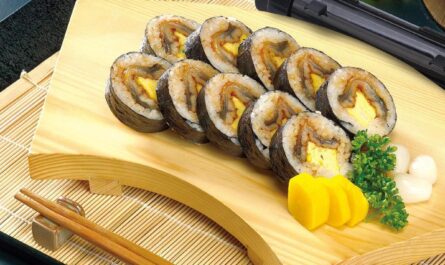Sushi has become a beloved cuisine worldwide, celebrated for its delicate flavors and artistic presentation. For those who wish to create sushi at home, the question often arises: Do you need a bamboo mat to make sushi? This is a common query, especially for beginners aiming to roll sushi like professionals. Understanding the tools and techniques involved in sushi preparation can greatly enhance your culinary experience.
In this article, we will explore whether a bamboo mat is essential for making sushi, alternative tools you might need, and some insight into its historical and cultural significance. Let’s delve into the world of sushi making!

Understanding Bamboo Mats
The Role of Bamboo Mats
Bamboo mats, also known as makisu, are traditional tools used in Japan for rolling sushi. They consist of thin strips of bamboo woven together, providing a flexible surface that helps shape the sushi roll. Many sushi enthusiasts believe that using a bamboo mat gives a more authentic feel to the sushi-making process.
While it can be argued that mats are essential for achieving perfectly shaped rolls, it’s not the only way to make sushi. This leads us to consider alternatives and their effectiveness.
Alternatives to Bamboo Mats
If you don’t have access to a bamboo mat, fret not! There are several tools and methods you can use to make sushi without one:
- Plastic Sushi Rollers: These are plastic equivalents to bamboo mats and can be easier to clean.
- Dish Towel: A clean, damp dish towel can substitute for a bamboo mat by offering a similar rolling effect.
- Free-hand Rolling: With practice, you can learn to roll sushi using just your hands and a cutting board.
For those interested in how to cook sushi rice to perfection before rolling, check out this sushi and rice guide on achieving the ideal texture for your sushi creations.
The Process of Making Sushi with a Bamboo Mat
Preparing the Ingredients
The first step to making sushi is gathering fresh and quality ingredients. You’ll need sushi rice, nori sheets, and your choice of fillings, such as fresh fish, vegetables, and other toppings.
Using the Bamboo Mat
Once your ingredients are ready, place a sheet of nori on the bamboo mat. Spread the cooked sushi rice evenly over the nori. Adding fillings along one edge, carefully roll the mat away from you, ensuring the nori and rice encase the fillings.
This technique requires a bit of practice but creates a neat, compact roll. If you’re looking to refine your sushi skills, this hog maws cooking method gives detailed insights into achieving great pressure cooking results, particularly helpful when preparing accompanying dishes.
Benefits of Using a Bamboo Mat
Using a bamboo mat offers certain advantages that can enhance your sushi-making experience:
- Control: The bamboo mat allows for precise control over the tightness and shape of the sushi roll.
- Authenticity: Using a traditional tool connects the cook with the cultural heritage of sushi-making in Japan.
To better understand the intricate etiquette involved in sushi dining and presentation, these sushi etiquette tips from Gurunavi will provide invaluable insights.
Cultural Significance of Bamboo Mats in Sushi Making
A Historical Perspective
The use of bamboo mats dates back centuries, reflecting a time when sushi was more than food. It was an art form. Crafting each roll with precision is a testament to the respect and care that has been long associated with making sushi.
Changing Trends
As sushi has globalized, the methods and materials have evolved. While many modern tools are available, bamboo mats remain a symbol of traditional culinary art.
When Not to Use a Bamboo Mat
There are situations where using a bamboo mat may not be ideal:
- If you’re in a hurry, using your hands to shape the sushi can be quicker.
- If you prefer a less compact roll, hand-rolling might be more appropriate.
Additionally, consider learning millet cooking techniques as an alternative grain to complement your sushi.

Conclusion
So, do you need a bamboo mat to make sushi? The answer is dependent on what you seek in your culinary journey. While a bamboo mat offers control and authenticity, you can indeed make sushi successfully without one using alternatives. Embrace the method that suits your style and enjoy the art of sushi making.
FAQs
- Can I make sushi without a bamboo mat?
Yes, you can use alternatives like plastic rollers, dish towels, or even roll by hand.
- What is the main advantage of using a bamboo mat?
It provides control and a traditional touch to your sushi rolls.
- Are bamboo mats hard to clean?
They require gentle cleaning to maintain, but they are not excessively difficult to manage.
This article contains affiliate links. We may earn a commission at no extra cost to you.


